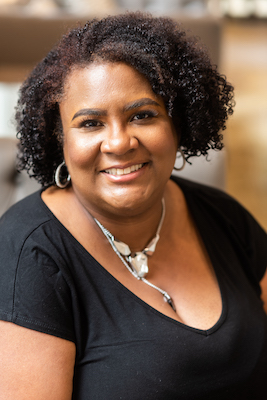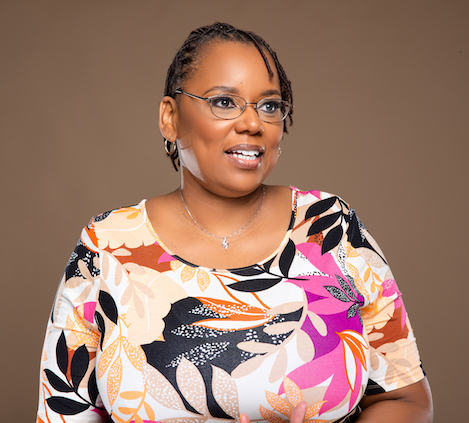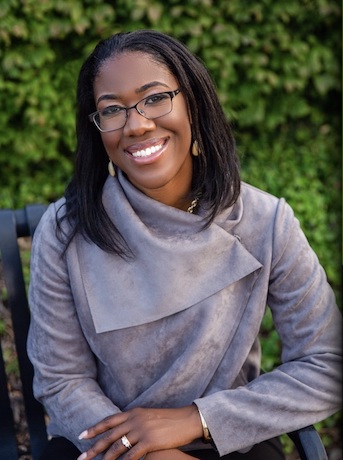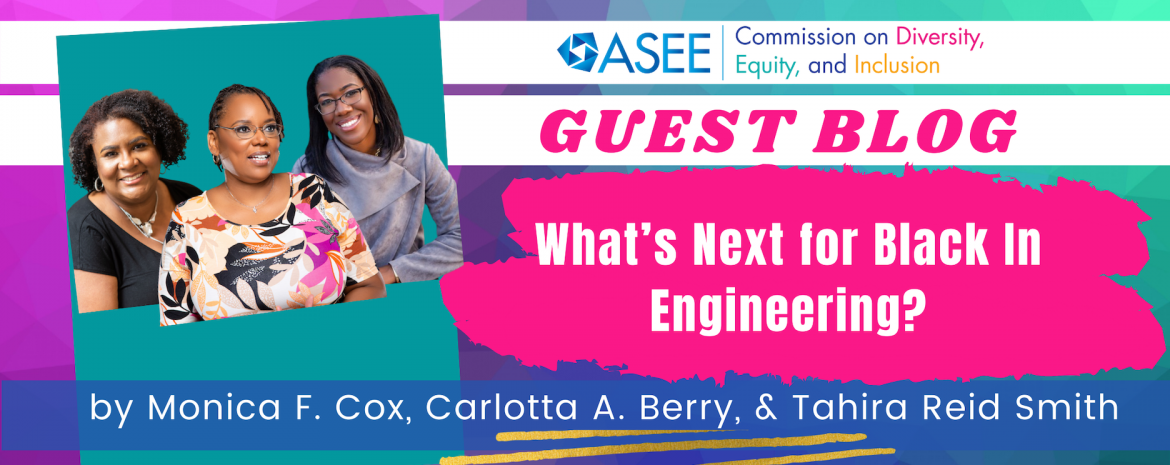What’s Next for Black In Engineering?
By Monica F. Cox, Carlotta A. Berry, and Tahira Reid Smith
When George Floyd was murdered May 25, 2020, the world moved to action. Despite the dangers of Covid-19 and an absence of a cure or vaccine for the deadly novel coronavirus, protesters from every walk of life filled streets in solidarity and created emotional tributes to declare that Black lives are valuable.
Corporations committed millions of dollars to support Black people and Black initiatives. Diversity, equity, inclusion, justice, belonging, access, and anti-Black racism became buzz words that heralded the commitment of CEO and leaders across industries to anti-Black racism. People holding the purse strings of their organizations committed to anti-Black racism with multi-pronged diversity statements, calls to action, and other public declarations of solidarity. Black professionals were on display on their organizations’ websites and in speaker series.
Federal agencies, foundations, and universities launched initiatives to promote and fund transformative STEM equity activities. Money that had never been committed to racial equity efforts suddenly emerged to “right diversity wrongs” in workplaces and offer new perspectives about ways to engage in authentic diversity work.
As the battle for diversity ensued, people who before May 2020 wouldn’t have dared say the word “Black” in the workplace or share their experiences as Black professionals seemed committed to racial equity, particularly as it related to Black people.
Over four hundred years after the first slaves landed in Virginia, the U.S. seemed ready to sincerely explore what racial reconciliation and racial reckoning looked like. This 180-degree turn in diversity awareness occurred just months after an Executive order from President Donald Trump banned diversity training “to combat offensive and anti-American race and sex stereotyping and scapegoating.”
It was a year of Blackness and Black awareness that many hadn’t seen since the U.S. Civil Rights Movement. The aftermath of George Floyd’s murder was Black History Month amplified, a time that many people born after 1970 had never experienced. A time that many Black people were heard because of a public, videorecorded murder of a Black man on a Minneapolis street.
Academics, a usually conservative group tethered to the hierarchy of higher education and its strict rules and ways of doing business, began to speak out on social media about the injustices many Black academics face.
In June 2020, when a group of approximately sixty faculty, practitioners, and students distraught about the summer of social justice convened on Zoom, we never imagined what our grassroots movement would become. We simply wanted to do something to address systemic racism and bias in the STEM academy we faced collectively.
This is how and when Black in Engineering (BIE) , was founded. With an initial goal to bring together people who were feeling the pain of police brutality against Black people and with a realization that none of us was exempt from the same brutality because of the color or our skin, we united, not fully comprehending where our efforts would lead us. Our current mission is to build community among Black faculty, researchers, practitioners and students in engineering and to serve as a resource for community building, sharing experiences with implicit bias and systemic racism, providing action items to address racial injustice, and identifying collaborators and sponsors.
At the time, BIE, which formed out of the Academic Research and Leadership Network (ARLN), became more than a listserv of Black professionals who only connected in-person during an annual two-day symposium where research was discussed and professional development topics were covered. It became a movement. We could not have imagined the groundbreaking impact that our work would have on engineering education. We had no idea we would become part of a larger cluster of Black in X members who would transform Black professional communities beyond our social community networks.
Realizing the power of social media, the BIE YouTube video series has garnered over 7,000 views; Twitter and Instagram social media accounts have over 7,000 followers.
Most importantly is our connections to policy. With a BIE Call to Action of close to three-hundred signatures, a highly attended webinar with ASEE Diversity, Equity, and Inclusion Committee (CDEI), an ASEE 2021 Distinguished Lecture, best diversity paper nomination in the ASEE Minorities in Engineering (MIND) division, and the NSBE Dean’s Roundtable, BIE’s presence cannot be denied.
Over the past year, schools and colleges of engineering have made visible differences in their promotion and commitments to Black academics. We have seen an increase in the number of Black engineering deans, provosts and presidents. Two deans in the Big Ten are Black women full professors, a population that represented 0.3% of all engineering faculty in the U.S. in 2018. Add to this an increased number of Black engineering faculty who have served as guest editors of prestigious journals, distinguished lecturers, and social justice thought leaders. University leaders have demonstrated their commitments to diversity with the creation of programs to hire diverse groups, particularly Black engineering students, postdocs, and faculty.
As the first recipients of the inaugural ASEE CDEI Award, Black In Engineering (BIE) has huge shoes to fill. We have no one to compete against except ourselves. We are passionate about continuing to grow and execute a strategic plan and long term vision to achieve our mission.
We were able to achieve this level of success quickly by doing things that engineering faculty don’t typically do. We were bold enough to speak out and amplify our voices to come together to push for change in the academy. The story is still not written on the long term impact of what we have begun as certain institutions work to implement parts of our call to action on their campuses. For example, Rose-Hulman Institute of Technology, Purdue University and several other institutions have shared the call to action in their community and are examining ways to implement the recommendations in a strategic plan.
We challenge the broader engineering community to continue anti-Black racism efforts with the same intensity that we have. It’s not enough to wish for change to happen. Framed within the context of the principles in our Call to Action, we revisit our action steps to offer explicit advice to move this work forward.
- Attitude- As you confront oppressive practices in your organizations, embrace confrontation and accountability and the consequences that accompany both. This work mandates difficult conversations that may not be the norm in your organization. Become comfortable with being uncomfortable with the pushback that will occur as you do this anti-Black racism work and change your environment.
- Clarity– Although it is tempting to speak about systemic oppression generally, boldly support Black students, postdocs, faculty, and staff in your organization. Make your advocacy visible in meetings and email correspondence. Focus on accomplice efforts that help and don’t harm Black stakeholders.
- Institutional Accountability- Institutional accountability occurs when a system addresses issues in that system that present equity. While attitude relates to the thoughts about how to address oppression, accountability involves actions. Examine and revise policies and practices that perpetuate systemic racism. Communicate expectations and expected outcomes related to those policies and practices. Let members of your community hold the organization and its leaders accountable for institutional change.
- Personal Accountability– Although many organizations hired diversity officers and leaders to do diversity work, leaders in the organization must take responsibility for the changes that do and do not happen in the organization. If a leader cannot take accountability for diversity, admit this to avoid the stigma of performative allyship.
- Commitment and Resources- It’s not enough for organizations to post diversity statements on their websites. Real money must accompany proposed changes. Follow through and institutional accountability in the form of metrics and evaluations should become the norm in spaces that denounce anti-Black racism.
Although BIE has been effective to date, we need the engineering community to support us as we navigate our engineering environments and advocate for ourselves. We are a small group of academics passionate about our mission but without resources it cannot happen. If you believe in our mission, here are ways you can help. We thank you in advance for connecting with us.
- Volunteer to partner or work with BIE to help us achieve our mission. We welcome allies and advocates to share their expertise, knowledge, and resources as we gain 501(c)3 status (coming May/June 2022).
- Become a corporate or research sponsor of the organization and BIE members. The Multiscale RECIPES for Sustainable Food Systems Network provides an amazing example of partnership in its commitment to the fiscal and research sponsorship of approximately 25 Black engineering scholars over the course of their project. This will allow scholars who may be isolated in their institutions to partner with other scholars of color and with people who support BIE’s mission.
- Make a financial donation to the organization. The Academic Leadership Network, Inc. (ALNI) was founded in October 2020 and is a non-profit entity that is the home of BIE. As a nonprofit, the ALNI offers tax deductions to donors. We use our funds to pay interns, sponsor speakers and professional development activities, and support staff to keep BIE moving as its members work their day jobs. You can donate at https://blackinengineering.org/donate .
- Amplify our message. Black in Engineering is always in need of content creators and cast to amplify our work on all platforms including blog posts, podcasts, videos, articles, interviews and social media posts. In addition, we need members of the community to promote our work by sharing our videos, call to action, and publications.
- Follow and share our work on YouTube, Twitter, and Instagram. Our handles are found below.
- Email us at blackinengineering@gmail.com with possible partnerships and ideas.
About the Authors

Dr. Monica Cox
Monica Cox
Monica F. Cox, Ph.D., is a disruptor, trailblazer, change agent, and leader who believes in living an authentic life even if it makes people uncomfortable. She grew up an only child in rural southeast Alabama, where she was raised by her educator parents to persist in the face of personal and professional adversity. As a coach, she guides clients in areas of career development; business strategy; and diversity, equity, and inclusion. A Distinguished Professor of Engineering and entrepreneur, Dr. Cox’s inquisitive nature contributes to her passion for educating others and sharing what she has learned via her experiences.
Website: www.drmonicacox.com
Twitter: @DrMonicaCox
Instagram: @DrMonicaCox
Carlotta Berry
Pronouns: She/her/hers

Dr. Carlotta Berry
Carlotta Berry is a professor in the Department of Electrical and Computer Engineering at Rose-Hulman Institute of Technology (RHIT). She is one of a team of engineering and science faculty who created the first multidisciplinary minor in robotics at RHIT. She is also the Dr. Lawrence J. Giacoletto Endowed Chair for Electrical and Computer Engineering. She has two bachelor’s degrees: mathematics from Spelman College, electrical engineering from Georgia Institute of Technology. She has a master’s from Wayne State University and PhD from Vanderbilt University. Her research interests include robotics education, human-robot interaction, and increasing marginalized and minoritized populations in STEM fields. Berry is a prolific speaker and author of the text, “Mobile Robotics for Multidisciplinary Study”.
Berry is also the founder and co-director of the Rose Building Undergraduate Diversity (ROSE-BUD) Program and advisor for the National Society of Black Engineers. She was previously the President of the Technical Editor Board for the American Society of Engineering Education (ASEE) Computers in Education Journal and a member of the 2021 ASEE fellows’ class.
She has a special passion for diversifying the engineering profession by encouraging more women, marginalized and minoritized populations to pursue STEM degrees. She feels that the profession should reflect the world that we live in in order to solve the unique problems that we face. Her strong service record has garnered her multiple accolades and awards including 2021 TechPoint Foundation for Youth Bridge Builder award, one of 30 Women in Robotics You Need to Know About 2020 by robohub.org, Reinvented Magazine Interview of the Year Award on Purpose and Passion, FIRST Indiana Robotics Gamechanger Award 2020, Women and Hi Tech Leading Light You Inspire Me Award 2018 and Insight Into Diversity Inspiring Women in STEM.
During 2020, she worked with colleagues around the world to start two non-profit organizations, Black In Engineering and Black In Robotics. They have a mission to bring awareness to systemic racism and inequity in STEM, build community, advocate for diversity, equity, inclusion, and connect with allies and sponsors.
Twitter: @DrCarlottaBerry
Instagram: @DrCABerry
Website: https://drcarlottaaberry.com

Dr. Tahira Reid Smith
Reid Smith
Pronouns: she/her/hers
Tahira Reid Smith is an Associate Professor in the School of Mechanical Engineering at Purdue University, the director of the Research in Engineering and Interdisciplinary Design (REID) Laboratory and was a Visiting NASA Scholar from 2020-201. Her research interests include quantifying and integrating human-centered considerations in the design process and human-machine systems. Her research program has received funding from the National Science Foundation, Air Force Office of Scientific Research, Procter & Gamble, General Motors, Ford Motor Company, and other sources. Prior to arriving at Purdue in 2012, she completed a postdoctoral position in the Mechanical Engineering Department at Iowa State University. In 2010, she received her PhD from the University of Michigan in Design Science, with Mechanical Engineering and Psychology as her focus areas. Dr. Reid received both her BS and MS degrees in Mechanical Engineering from Rensselaer Polytechnic Institute (RPI) in 2000 and 2004, respectively.
Twitter: @drtahirareid
LinkedIn: www.linkedin.com/in/tahira-reid-smith
Do you want to become a guest blogger?
CDEI Guest Blogs highlight future events, describe best practices, or share calls to action by CDEI members. We invite you to propose posts that share brief research highlights, reports of impactful initiatives, critical thought pieces, and resources you find useful. We especially encourage emerging scholars to share their work. If you are interested in sharing a blog or resource post, you may submit your proposal here. All posts are screened and edited.

